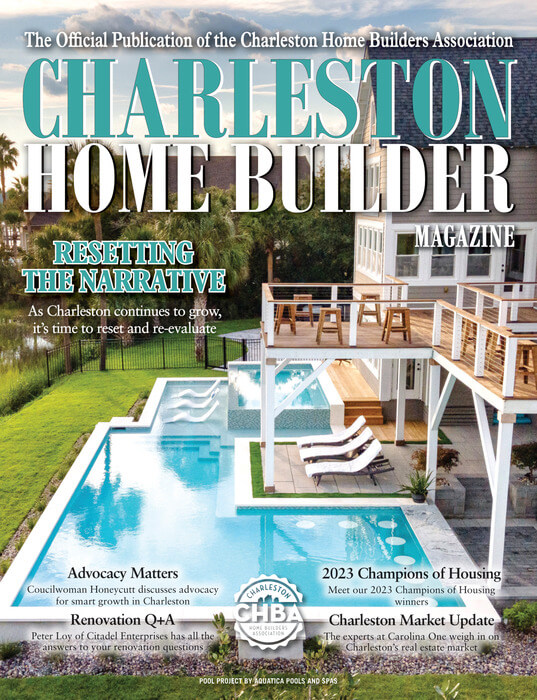REPRESENTING ALL PROFESSIONS THAT SUPPORT THE HOME BUILDING INDUSTRY
The Charleston HBA is an advocate on behalf of members, actively working to elect pro-housing, pro-building candidates to public office and keeping members updated about changing rules and regulations that affect the home building industry.
Grow stronger with us and receive member-exclusive benefits as part of the Charleston HBA and the four counties it represents.

ANNUAL Magazine
A celebration of home ownership in the Lowcountry, Charleston Home Builder Magazine allows the opportunity to acquire information straight from the source.

